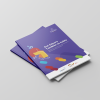On February 4, 2016 (Car-Free Day), Bogota’s government implemented a new segregated bikeway along Carrera 11 (11th Avenue) between 82nd and 100th Streets. Prior to this, the bikeway ran along the sidewalk and was the main north-south route in that part of the city. Despacio decided to analyze the intervention’s impact on four different road actors: pedestrians, bike users, public transit users, and motor vehicle users.
Click here to see the full 38-page report (in Spanish). Below the main findings and conclusions:
Overall Impact
- The intervention offers more space for pedestrians and public transit users boarding and exiting the bus. This is especially important given that Carrera 11 is a busy commercial avenue used by many pedestrians and buses.
- Bicycle users now have a safer, more comfortable and coherent infrastructure. The bikeway is segregated from motor traffic with demarcated spaces painted blue in the intersections. (See our recent Bicycle Infrastructure Guide for Colombian Cities for more information and recommendations).
- Dedicated bike infrastructure along Carrera 11 has reduced conflicts between pedestrians and bicycle users, who should be given priority according to the mobility pyramid.
- Southbound motor vehicles have gained an extra lane while northbound ones have lost this option. However, considering the benefits to other modes and the inefficiency and unsustainability of motorized modes, we did not consider this as a major issue in our analysis.
Methodology
Our analysis primarily employed qualititative methods but also included a quantitative component. We observed the old and new infrastructure through bike rides, walks, and photos of people interacting with infrastructure. We then conducted counts of pedestrians and bicycles along Carrera 11 and noted the direction of the travel. These measurements took place on January 28th (before the intervention), February 4th (Car-Free Day), February 25th and March 15th (both after the intervention).
Before, During and After Car-Free Day
These counts allowed Despacio to analyze changes in pedestrian and bicycle flows before, during and after Car-Free Day. Here were the main results:
- The flow of cyclists doubled during Car-Free Day when compared to the previous week. The number of cyclists per hour increased 22.48% between the first and last measurement days.
- The pedestrian volume is much higher on the western sidewalk, meaning that the old bikeway was creating conflicts in an area with particularly high foot traffic.
- A lot of pedestrians cross in places withou crosswalks, including the intersection where we were measuring (Calle 86A)
- Even the old bikeway is now just a sidewalk, many pedestrians continue to avoid it. Some cyclists still use the old bikeway.
- We witnessed most motor vehicles respecting the new bikeway but there have been documented instances of cars invading the bikeway. During the last day of measurements, we also counted the number of ORNI («unidentified wheeled objects») using the bikeway.
Conclusions and Recommendations
The overall impact of the intervention has been positive, as it has increased the number of bike users along Carrera 11 and returned sidewalk space to pedestrians. However, our observations and measurements revealed a few things that should be considered. A few recommendations:
- Eliminate markings for the old bikeway to make clear the space is for pedestrians, not bikes. The government should also carry out campaigns and interventions to inform cyclists that continue using the old bikeway.
- Improve pavement and draining, considering that bicycles and cars have different needs. It has rained a lot during the last month and a half in Bogota. This created large puddles along the new bikeway, making it harder to use.
- Improve traffic light timing, intersections and access points to facilitate bike use.
- Extend the intervention to the south, along Carrera 11 to Plaza de Lourdes and then along Carrera 13 to the city center.
Download the full report here. Also check out VICE Colombia’s article about the publication. Our forthcoming Bicycle Infrastructure Guide for Colombian Cities for the Ministry of Transport will have more information on cycle infrastructure and planning generally.








Comentarios recientes